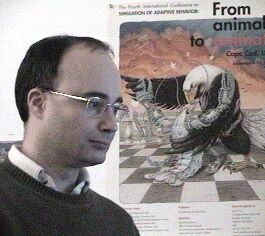Tumor growth modeling
Cancer is a complex collection of distinct genetic diseases united by six hallmarks (traits that govern the transformation of normal cells to malignant cells). Hanahan and Weinberg described these hallmarks in an article entitled The Hallmarks of Cancer [1], with a recent update [2]. In these articles the authors describe the six essential alterations that collectively dictate malignant growth: self-sufficiency in growth signals, insensitivity to growth-inhibitory (antigrowth) signals, evasion of programmed cell death (apoptosis), limitless replicative potential, sustained angiogenesis, and tissue invasion.
Moreover, cancer can be viewed, from the standpoint of the artificial life discipline, as an ecological system in which cells with different mutations compete for survival, generating an emergent behavior which is present in systems whose elements interact locally providing a global behavior which is not possible to explain from the behavior of a single element, but from the result among those interactions of the collective. Following this line, we have been using Cellular Automata (CA) for modeling tumor growth behavior using a scheme based on the presence of the abstract model of the hallmarks in the cells.
We are experimenting with aspects like:
- Analyzing the relevance of the hallmarks in different environmental situations.
- Studying behavior transitions when a treatment is applied.
- Simulating the effect of Cancer Stem Cells (CSCs).
Examples of simulations:
-
Scenario with a high probability of acquisition of hallmarks that favors the proliferation of the hallmark Evade Apoptosis:

-
Scenario with a lower probability of acquisition of hallmarks:

-
Scenario with a low probability of acquisition of hallmarks and short telomere lengths that favors the proliferation of the hallmark Limitless replicative potential:

-
Incorporation of Cancer Stem Cells to check their tumor regrowth capability after a treatment against Differentiated Cancer Cells:

[1] Hanahan, D. and Weinberg, R.A. (2000), The hallmarks of cancer, Cell 100:57-70.
[2] Hanahan, D. and Weinberg, R.A. (2011), Hallmarks of cancer: The next generation, Cell 144: 646-674.

